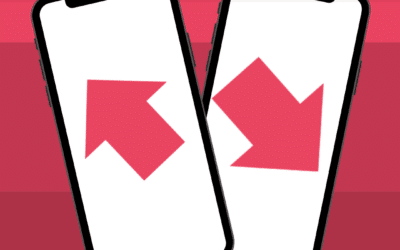Whether you loved them or hated them, our summer holiday memories are inextricably linked with summer workbooks, those brightly coloured publications, which fly off the shelves just prior to the end of each summer term. With our take on summer workbooks, however, the memories are sure to be pleasant! Take advantage of the summer lull to refresh learners’ memories in an enjoyable way and pull out your best content. The perfect, simple summer training activity. All that’s left for you to do is to devise your summer programme to get learners interested in your key content.
To boost the entertainment aspect yet further, enhance your summer workbooks with challenges and competitions.
There will be a twofold benefit for you: from a learning point of view, your learners will consolidate their knowledge through revision, and from an engagement point of view, they will keep returning to your application, which will entrench their habits.
How to make a summer workbook?
1 – Showcase existing content
Transform old into new! To create your summer workbook, there’s no need to look far.
- First decide on the workbook’s subjects and chapters.
- Next, select the content you feel is essential in your existing courses and reorganise it into modules (1 module = 1 chapter) in the new course
- Of course, you can create new activities specifically for the occasion if you consider it necessary (to introduce new concepts for example).
2 – Find a rhythm
Just like for a traditional summer workbook, the frequency needs to be established. For traditional summer workbooks, one page per day during the summer holidays was enough to get through the book while still maintaining a light rhythm.
In the same vein, decide how long the event should last (from a few days to the entire summer) and the frequency with which content will be made available (once a day/week?).
To vary the rhythm, there are several possible training options: microlearning training or standard training with modules blocked until specific dates. With microlearning, learners choose the activity frequency themselves. If you decide to unblock modules on certain dates, create a schedule and don’t forget to notify learners (see the following point).
3 – Get people talking about the summer workbook
For your initiative to be a success, you need to communicate about it!
Think about the strategy behind your summer training activity.
You can opt to make the course compulsory and/or turn it into a competition.
To galvanise learners even more, add a bonus competition! Don’t forget to decide on the number of winners, the winning criteria, and the prize(s) up for grabs beforehand.
Similarly, we recommend establishing a content calendar. If you’re short on inspiration, here’s an example to help you:

Also, don’t forget to communicate simultaneously on external channels: in-house chat room, intranet, corporate social network, at meetings and even in your email signatures. Disseminate the information as widely as possible.
Finally, remember that although summer workbooks are about learning, they must also be enjoyable. Opt for a light-hearted communication tone, with a sunny disposition and a happy mood.
Ready to dive into your summer workbook? Don’t delay, summer is on its way!

Cornélia a enfilé sa tenue de cosmonaute en 2017 en rejoignant Teach on Mars. Elle a d’abord dédié 5 années à accompagner les clients en tant que Customer Success Manager. Elle a ensuite pris une nouvelle trajectoire en pilotant les projets de communication et de marketing avec une ambition constante : explorer la galaxie pour renforcer la réputation de l’entreprise et soutenir son développement. Animée par une approche centrée sur le client, Cornélia contribue à renforcer les relations durables, la satisfaction des clients et à soutenir la croissance de l’entreprise.




